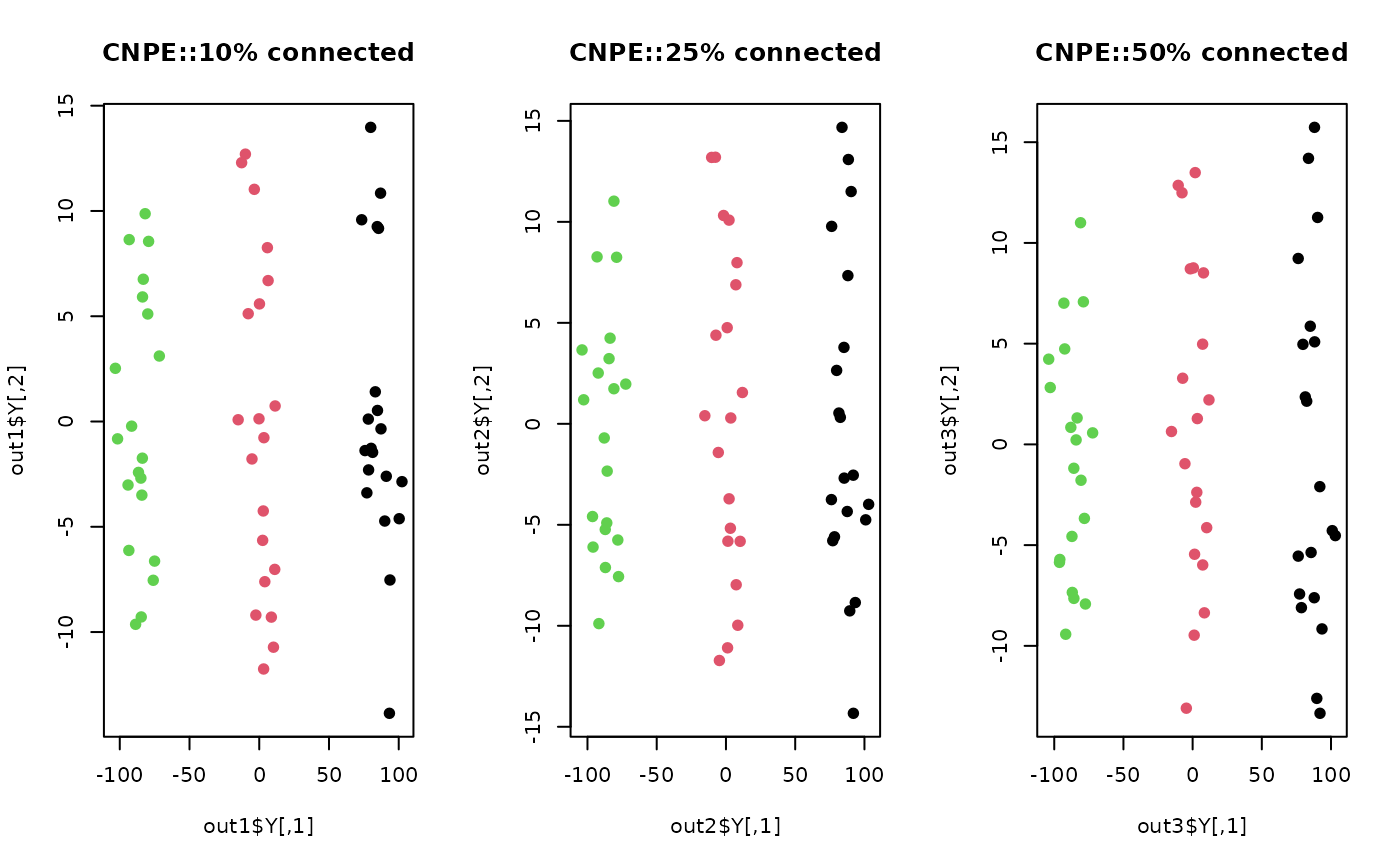One of drawbacks of Neighborhood Preserving Embedding (NPE) is the small-sample-size problem under high-dimensionality of original data, where singular matrices to be decomposed suffer from rank deficiency. Instead of applying PCA as a preprocessing step, Complete NPE (CNPE) transforms the singular generalized eigensystem computation of NPE into two eigenvalue decomposition problems.
Arguments
- X
an \((n\times p)\) matrix or data frame whose rows are observations and columns represent independent variables.
- ndim
an integer-valued target dimension.
- type
a vector of neighborhood graph construction. Following types are supported;
c("knn",k),c("enn",radius), andc("proportion",ratio). Default isc("proportion",0.1), connecting about 1/10 of nearest data points among all data points. See alsoaux.graphnbdfor more details.- preprocess
an additional option for preprocessing the data. Default is "center". See also
aux.preprocessfor more details.
Value
a named list containing
- Y
an \((n\times ndim)\) matrix whose rows are embedded observations.
- trfinfo
a list containing information for out-of-sample prediction.
- projection
a \((p\times ndim)\) whose columns are basis for projection.
References
Wang Y, Wu Y (2010). “Complete Neighborhood Preserving Embedding for Face Recognition.” Pattern Recognition, 43(3), 1008--1015.
Examples
# \donttest{
## generate data of 3 types with clear difference
dt1 = aux.gensamples(n=20)-50
dt2 = aux.gensamples(n=20)
dt3 = aux.gensamples(n=20)+50
lab = rep(1:3, each=20)
## merge the data
X = rbind(dt1,dt2,dt3)
## try different numbers for neighborhood size
out1 = do.cnpe(X, type=c("proportion",0.10))
out2 = do.cnpe(X, type=c("proportion",0.25))
out3 = do.cnpe(X, type=c("proportion",0.50))
## visualize
opar <- par(no.readonly=TRUE)
par(mfrow=c(1,3))
plot(out1$Y, col=lab, pch=19, main="CNPE::10% connected")
plot(out2$Y, col=lab, pch=19, main="CNPE::25% connected")
plot(out3$Y, col=lab, pch=19, main="CNPE::50% connected")
 par(opar)
# }
par(opar)
# }